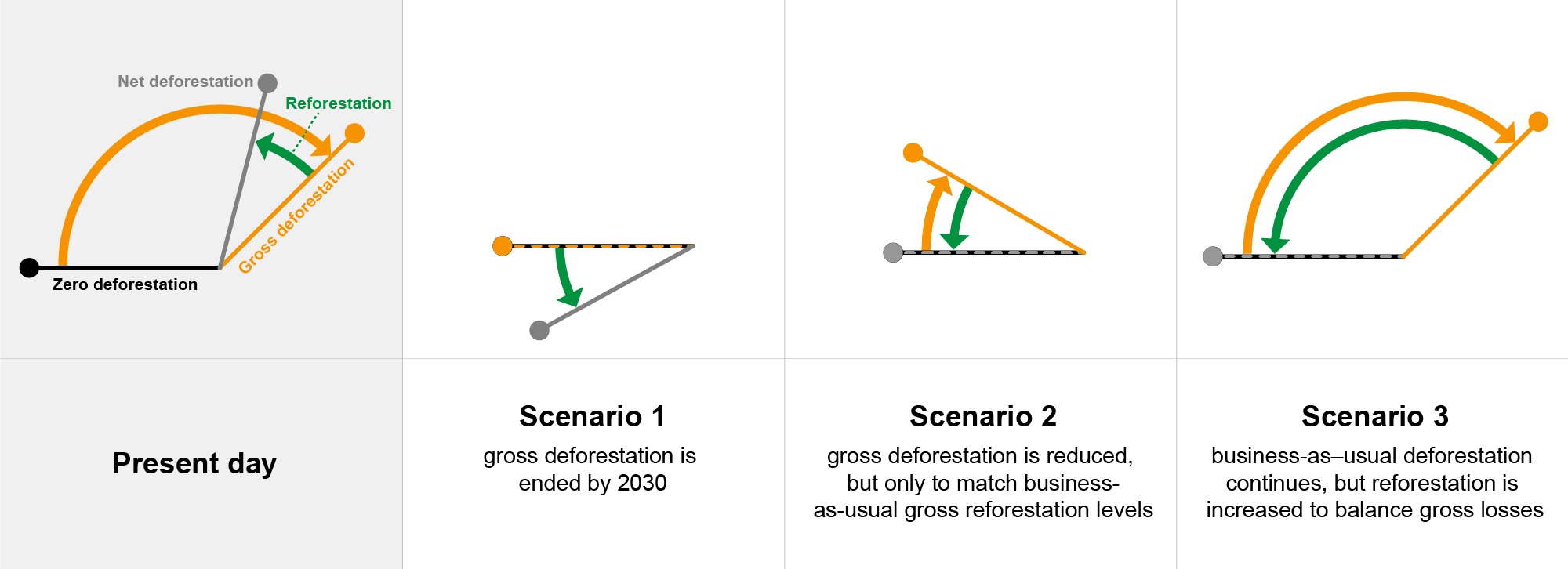
The Glasgow Leaders’ Declaration on Forests and Land Use signed at COP26 represents a commitment by leaders representing over 85% of the world’s forests to halt and reverse deforestation and land degradation by 2030. But could the declaration’s ambitions be too ambiguous? An international team of researchers looked into this question.
At the most recent annual UN climate change conference – COP26 – which took place in Glasgow in early November 2021, 141 countries including Brazil, Canada, China, the Democratic Republic of the Congo, Indonesia, Russia, the UK, and the US, signed a pledge to end deforestation across the globe by 2030. The Glasgow Leaders’ Declaration on Forests and Land Use is one of several agreements designed to keep the Paris Agreement’s objectives within reach and inextricably ties protecting the world’s forests to the fight against climate change. The declaration has since been hailed by some as one of the most significant forest and land use pledges made during COP26.
However, in their new opinion piece just published in the Proceedings of the National Academy of Sciences of the United States of America (PNAS), IIASA researcher Thomas Gasser and his colleagues, Philippe Ciais from the IPSL Sciences Laboratory of Climate and the Environment in France, and Simon Lewis from the University of Leeds and University College London in the UK, point out that one crucial detail seems to have been omitted from the pledge: Will the deforestation it aims to halt be gross or net?
Gross and net deforestation differ, the researchers explain, because in most countries, deforestation and reforestation are processes that are continuously happening at the same time.
“The distinction matters, because differing interpretations of how countries can “end deforestation” significantly impact future carbon dioxide emissions. Put simply, ending gross deforestation would be a major step forward for the climate. But considering only net deforestation could be anecdotal, and even be detrimental to biodiversity,” they write.
With that said, the researchers note that it is important to understand that stopping deforestation in 2030 does not mean having zero CO2 emissions in 2030, due to the complex dynamics of the carbon cycle.
To demonstrate the importance of the distinction between gross and net forest area loss, the researchers developed three scenarios that fulfil the commitment to halt forest area loss by 2030.
In these scenarios, the team illustrated a world where gross or net deforestation in signatory countries comes to a halt by 2030. The first scenario models a situation in which gross deforestation in signatory countries is ended by 2030, while the second explores a world where gross deforestation in signatory countries is reduced, but only to the extent where it matches their business-as-usual gross reforestation levels. In the final scenario, the signatory countries continue with business-as–usual deforestation, but simultaneously increase their forest area by developing new plantations to balance their gross losses.
 © Adam Islaam | IIASA
© Adam Islaam | IIASA
While all three of these scenarios appear to comply with the declaration, the authors note that they produce very different net carbon gains, showing that the level of emissions reductions (if any) depends on whether gross or net deforestation is reduced to zero. The first scenario sequesters a significant amount of CO2 by 2050, whereas the second one only does half as much, and the last scenario produces no significant carbon sequestration.
“The most important takeaway of our modeling exercise is that the Glasgow Leaders’ Declaration on Forests and Land Use is too ambiguous. We must therefore monitor the signatory countries' actions to see whether it will actually deliver on its promises or be just another set of empty promises like the 2014 New York Declaration on Forests that no one remembers,” Gasser concludes.
Reference
Gasser, T., Ciais, P., Lewis, S.L. (2022). How the Glasgow Declaration on Forests can help keep alive the 1.5°C target. Proceedings of the National Academy of Sciences of the United States of America (PNAS) DOI: 10.1073/pnas.2200519119
News

05 June 2024
The 2024 State of CDR Report: Scaling up CO2 removal to meet Paris Targets

23 April 2024
US Permanent Representative to International Organizations in Vienna visits IIASA

15 April 2024

